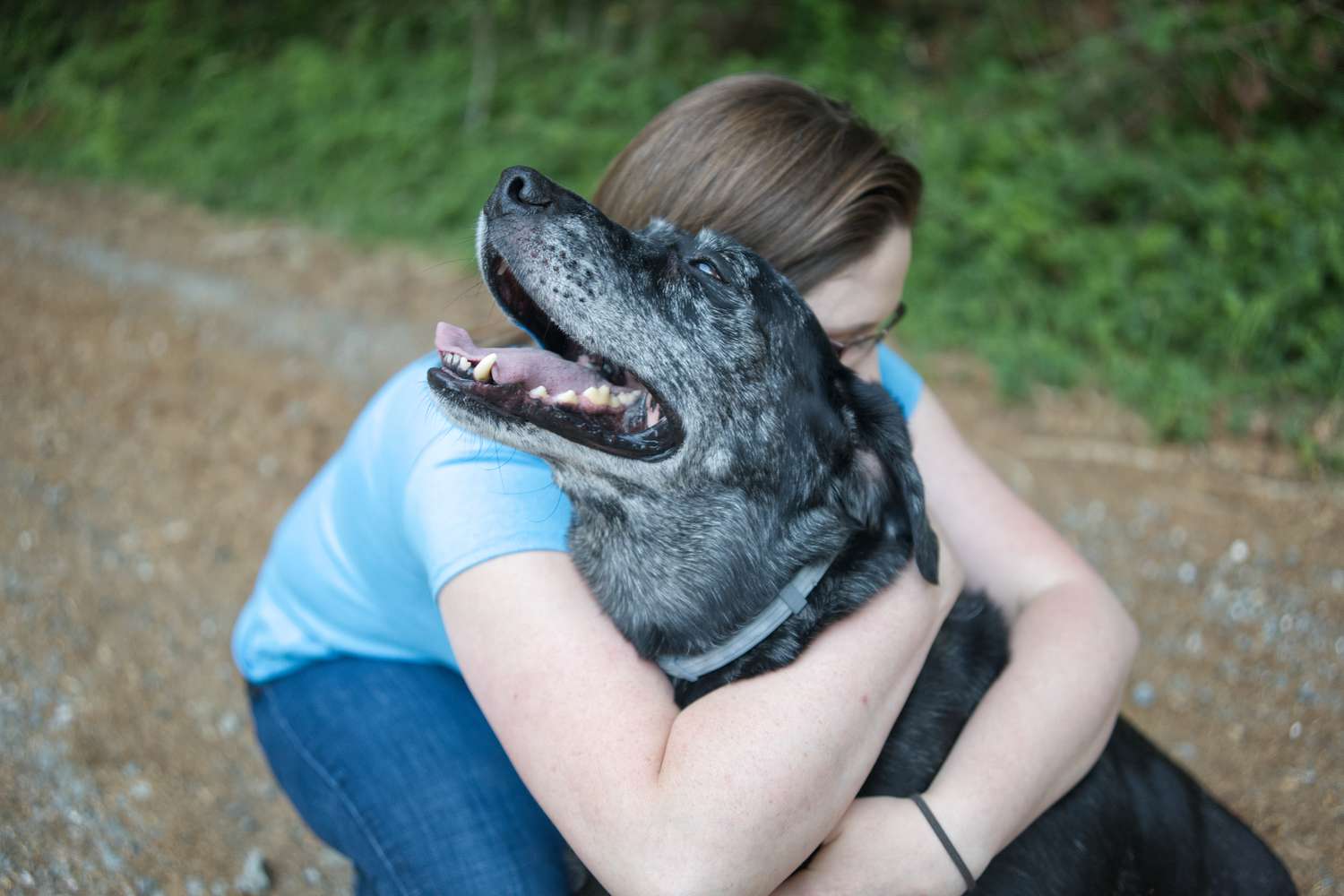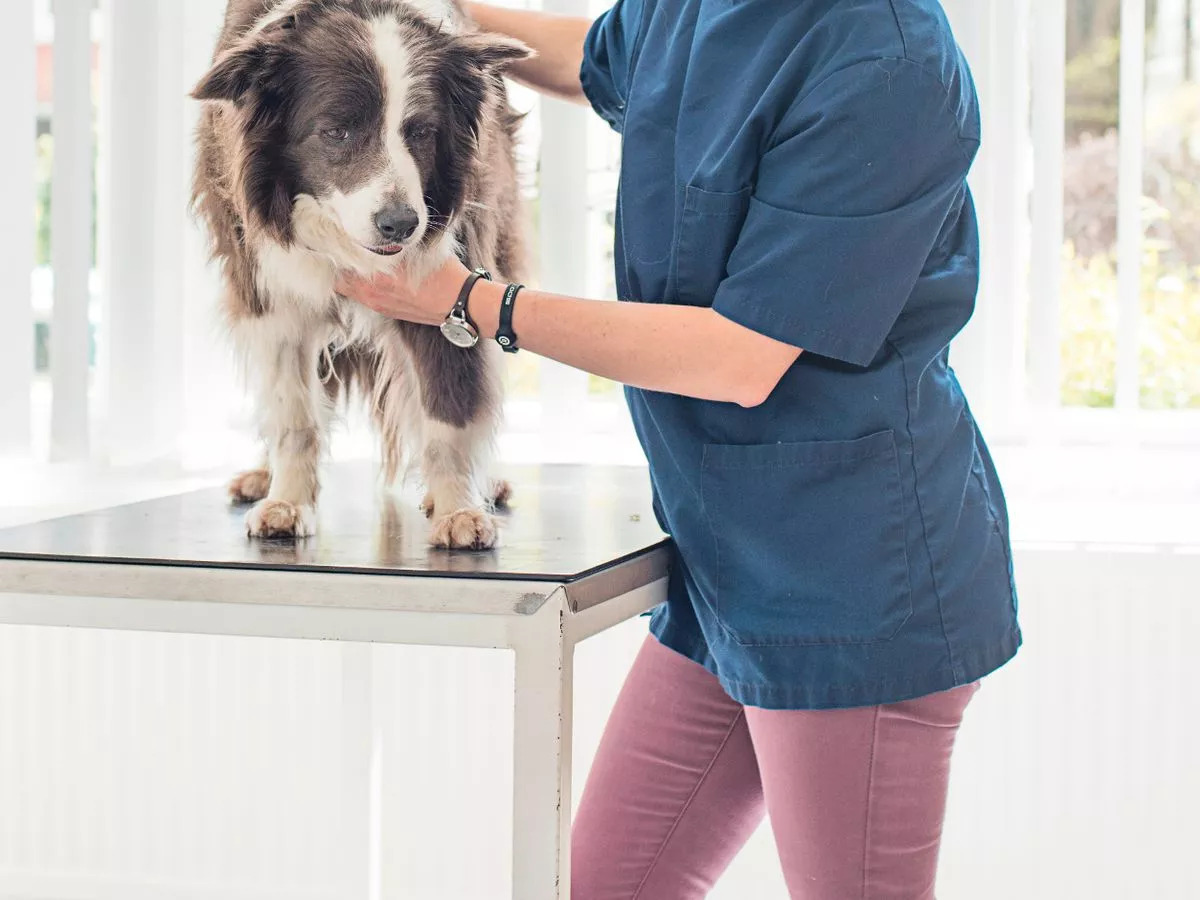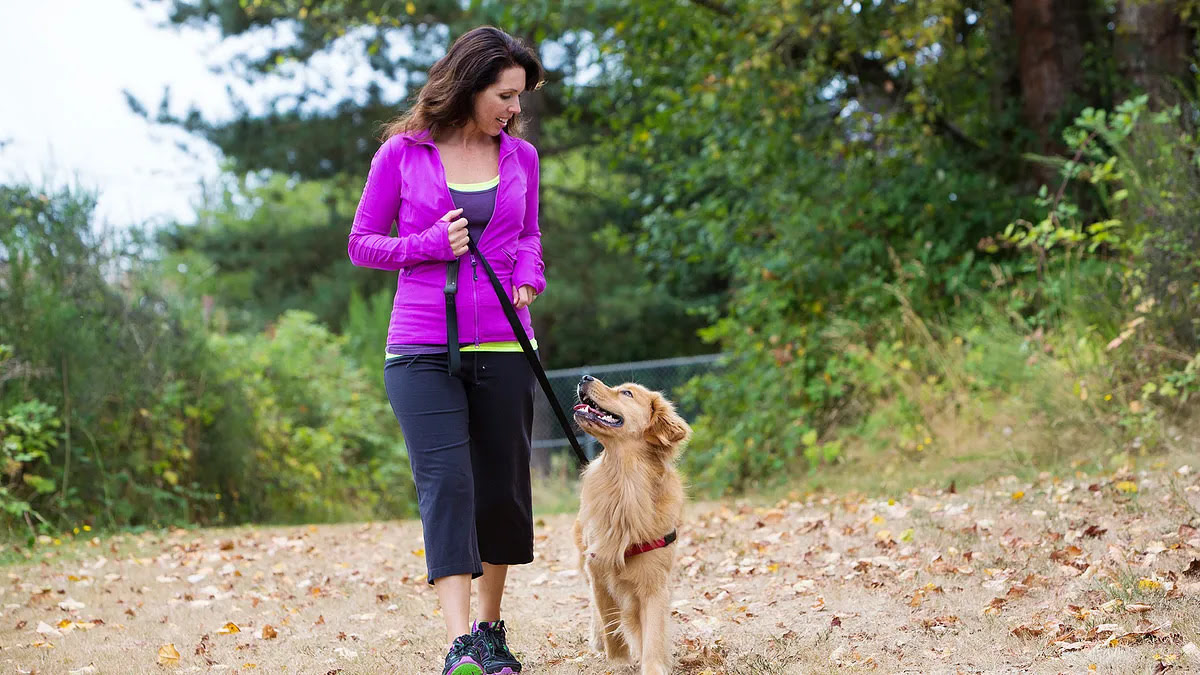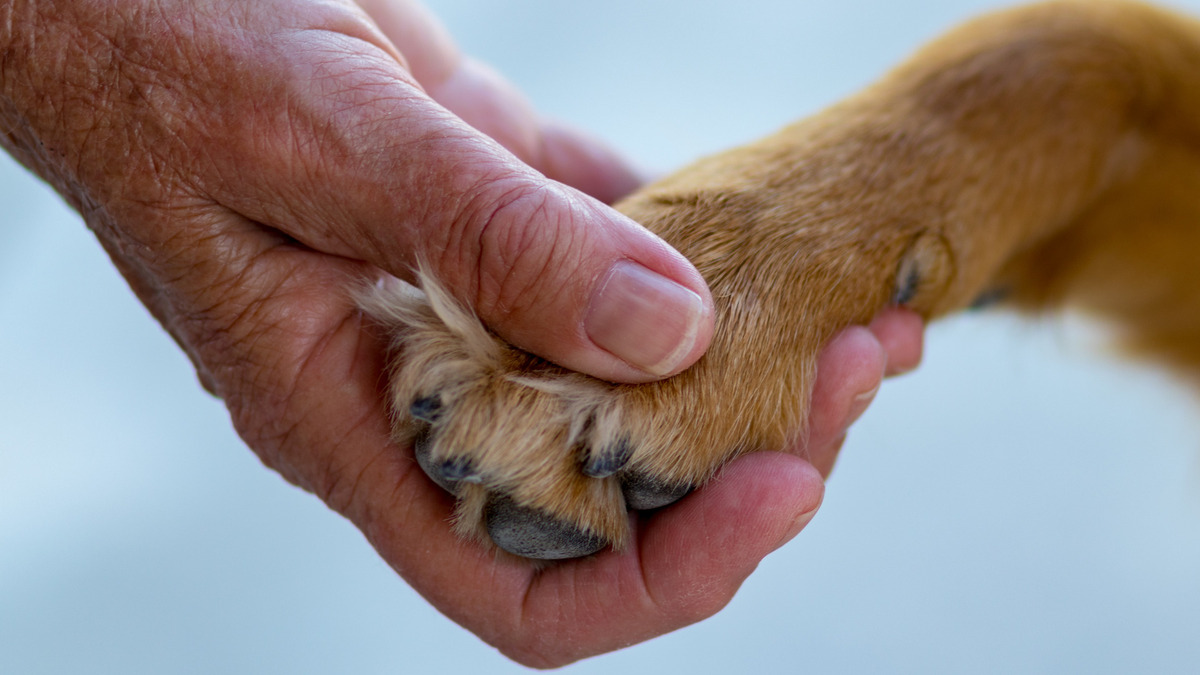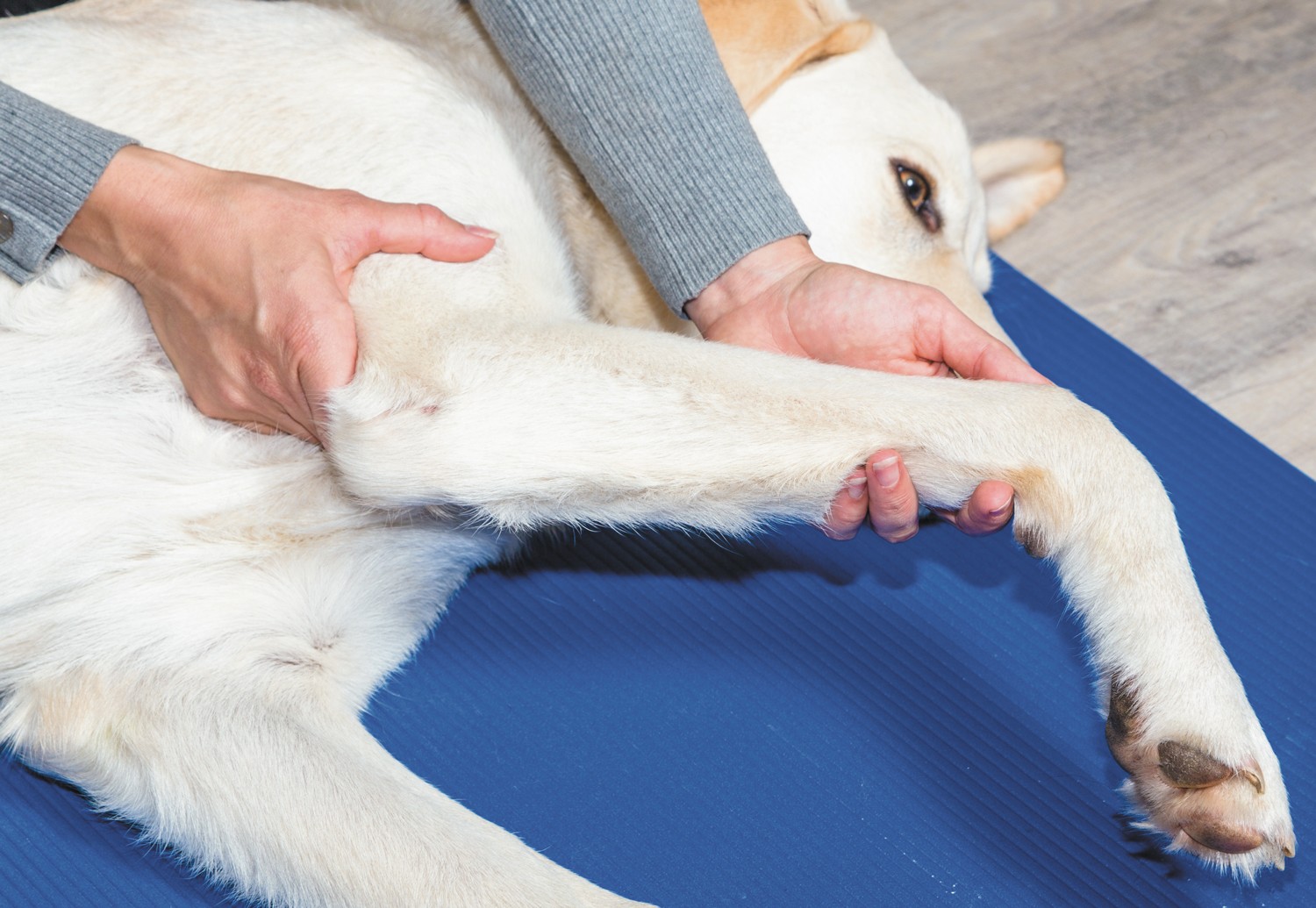Home>Health & Wellness>Common Health Issues>Muscular and Joint Health>When An Older Dog Has Arthritis, Is It Typical For Them To Limp?


Muscular and Joint Health
When An Older Dog Has Arthritis, Is It Typical For Them To Limp?
Modified: February 21, 2024
Learn about the typical signs of arthritis in older dogs, including limping, and discover how to support their muscular and joint health. Find expert advice and solutions.
(Many of the links in this article redirect to a specific reviewed product. Your purchase of these products through affiliate links helps to generate commission for Pawsomeoldies.com, at no extra cost. Learn more)
Table of Contents
Introduction
As our beloved canine companions age, they may experience a range of health issues, including arthritis. This condition can significantly impact their quality of life, causing discomfort and mobility challenges. Understanding the signs and symptoms of arthritis in older dogs is crucial for providing them with the care and support they need to thrive in their senior years.
Arthritis, also known as osteoarthritis or degenerative joint disease, is a common ailment among aging dogs. It affects the joints, leading to inflammation, pain, and stiffness. Just like humans, dogs can develop arthritis as they grow older, and it can occur in any breed, although larger breeds are more prone to this condition.
In this article, we will delve into the world of arthritis in older dogs, exploring the symptoms, treatment options, and the impact it can have on their daily lives. By shedding light on this prevalent issue, we aim to equip dog owners with the knowledge to recognize and address arthritis in their aging pets, ensuring they receive the care and attention they deserve.
Understanding the challenges faced by older dogs with arthritis is the first step toward providing them with the support and comfort they need to navigate this stage of their lives. Let's embark on this journey to gain insight into the world of arthritis in older dogs and discover how we can make a positive difference in the lives of our faithful companions.
Understanding Arthritis in Older Dogs
Arthritis, a prevalent condition in aging dogs, affects their joints, leading to discomfort and reduced mobility. This degenerative joint disease can significantly impact the overall well-being of our furry friends. As dogs age, the cartilage in their joints may deteriorate, causing inflammation, pain, and stiffness. This can result in a range of symptoms that affect their daily activities and quality of life.
The development of arthritis in older dogs is often attributed to a combination of factors, including genetics, previous injuries, obesity, and the natural aging process. Larger breeds are particularly susceptible to arthritis due to the additional stress placed on their joints. Additionally, certain breeds may have a genetic predisposition to joint issues, making them more prone to developing arthritis as they age.
The gradual wear and tear on the joints over the years can lead to the breakdown of cartilage, resulting in bone-on-bone contact within the joint. This friction causes pain and inflammation, further exacerbating the discomfort experienced by older dogs with arthritis. As a result, they may exhibit signs of stiffness, reluctance to engage in physical activities, and changes in their gait.
It's important for dog owners to recognize the potential impact of arthritis on their aging pets. By understanding the underlying mechanisms of this condition, they can take proactive measures to support their dogs' joint health and overall well-being. Regular veterinary check-ups, appropriate exercise routines, and a balanced diet can all contribute to managing and mitigating the effects of arthritis in older dogs.
By gaining a deeper understanding of arthritis in older dogs, we can better appreciate the challenges they face and the support they require to lead comfortable and fulfilling lives in their senior years. This knowledge empowers dog owners to be proactive in addressing the needs of their aging pets, ensuring they receive the care and attention necessary to navigate the complexities of arthritis with grace and resilience.
Symptoms of Arthritis in Dogs
Recognizing the symptoms of arthritis in dogs is crucial for early intervention and effective management of this condition. While aging dogs are more susceptible to developing arthritis, it's essential for pet owners to be vigilant and observant of any signs that may indicate joint discomfort and mobility issues. Here are the key symptoms to watch for:
-
Limping and Altered Gait: One of the most noticeable signs of arthritis in dogs is limping or an altered gait. As the condition progresses, dogs may exhibit stiffness and reluctance to put weight on certain limbs. This can be particularly evident after periods of rest or inactivity.
-
Difficulty Rising: Arthritic dogs may struggle to rise from a lying or sitting position. They may appear hesitant or slow when attempting to stand up, indicating discomfort in their joints.
-
Reduced Activity Levels: Dogs with arthritis may become less active, showing a reluctance to engage in physical activities they once enjoyed. They may be less inclined to run, jump, or participate in play sessions.
-
Licking or Chewing Joints: Persistent licking or chewing at specific joints can be a sign of discomfort and inflammation. Dogs may attempt to alleviate their discomfort through this behavior, drawing attention to the affected areas.
-
Behavioral Changes: Arthritic dogs may exhibit changes in behavior, such as increased irritability or restlessness. They may also seek out quieter and more comfortable resting spots, avoiding areas that exacerbate their joint pain.
-
Muscle Atrophy: Over time, the muscles surrounding arthritic joints may weaken and atrophy. This can result in a noticeable loss of muscle mass, particularly in the affected limbs.
-
Joint Stiffness and Swelling: Dogs with arthritis may experience joint stiffness, making movements appear rigid and uncomfortable. Swelling around the affected joints can also be observed, indicating inflammation and discomfort.
-
Reluctance to Climb Stairs or Navigate Uneven Terrain: Arthritic dogs may display hesitation or reluctance when faced with activities that require climbing stairs or navigating uneven surfaces. This reluctance stems from the discomfort and instability they experience in their joints.
By recognizing these symptoms, dog owners can take proactive steps to seek veterinary care and implement strategies to improve their pets' comfort and mobility. Early detection and intervention are key in managing arthritis in dogs, allowing them to maintain a good quality of life as they age.
Understanding these symptoms empowers dog owners to provide the necessary support and care for their aging pets, ensuring they receive the attention and treatment required to alleviate the impact of arthritis on their daily lives.
Limping as a Common Symptom
Limping is a prevalent and often unmistakable sign of arthritis in older dogs. As the degenerative joint disease progresses, dogs may exhibit a noticeable alteration in their gait, favoring certain limbs while displaying reluctance to put weight on others. This change in movement is a clear indicator of discomfort and joint pain, prompting dog owners to pay close attention to their pet's mobility.
The onset of limping in arthritic dogs is often more pronounced after periods of rest or inactivity. When rising from a lying or sitting position, they may display hesitancy and stiffness, struggling to bear weight on the affected limbs. This reluctance to engage in normal movement patterns is a direct result of the discomfort and inflammation experienced in their arthritic joints.
Furthermore, the altered gait associated with limping can manifest as a visible imbalance in the dog's stride. They may exhibit a limp in one or more limbs, showcasing an uneven distribution of weight as they move. This asymmetry in their gait is a poignant indication of the challenges they face due to arthritis, highlighting the impact of joint pain on their daily activities.
Limping can also lead to a reduction in the dog's overall activity levels. As they experience discomfort and stiffness in their joints, they may become less inclined to engage in physical activities such as running, jumping, or playing. This change in behavior is a direct consequence of the discomfort associated with arthritis, prompting dogs to limit their movements to alleviate their joint pain.
Additionally, persistent limping can contribute to muscle atrophy in the affected limbs. The reduced use of these limbs due to discomfort and altered gait can lead to a decline in muscle mass and strength over time. This muscle atrophy further exacerbates the challenges faced by arthritic dogs, impacting their mobility and overall physical well-being.
By recognizing limping as a common symptom of arthritis in older dogs, pet owners can take proactive measures to seek veterinary care and implement strategies to alleviate their pet's discomfort. Understanding the significance of limping empowers dog owners to provide the necessary support and care for their aging pets, ensuring they receive the attention and treatment required to mitigate the impact of arthritis on their daily lives.
Other Signs of Arthritis in Older Dogs
In addition to limping, there are several other signs that may indicate the presence of arthritis in older dogs. These symptoms, while not as immediately noticeable as limping, can provide valuable insights into the discomfort and challenges experienced by arthritic dogs. By recognizing these signs, pet owners can take proactive steps to address their pet's joint health and overall well-being.
One common indicator of arthritis in older dogs is a noticeable decrease in their overall activity levels. Dogs that once eagerly participated in physical activities, such as playing fetch or going for walks, may exhibit a reluctance to engage in these activities. This reduced activity can stem from joint pain and stiffness, causing dogs to withdraw from their usual energetic behaviors.
Furthermore, arthritic dogs may display signs of discomfort when touched or handled, particularly in the areas affected by arthritis. They may exhibit sensitivity or pain when specific joints are manipulated or touched, indicating the presence of inflammation and discomfort. This sensitivity can manifest as a reluctance to be petted or groomed, as the affected areas may elicit a response of discomfort or pain.
Changes in behavior can also serve as subtle indicators of arthritis in older dogs. Dogs may become more irritable or withdrawn, displaying changes in their temperament and interactions with family members. Additionally, they may seek out quieter and more comfortable resting spots, avoiding areas that exacerbate their joint pain. These behavioral changes reflect the impact of arthritis on the dog's overall well-being and comfort.
Another sign of arthritis in older dogs is the development of muscle atrophy in the affected limbs. As the discomfort and stiffness in their joints limit their movement, the muscles surrounding these joints may weaken and diminish in size. This loss of muscle mass can further contribute to the challenges faced by arthritic dogs, impacting their mobility and physical strength.
In some cases, dogs with arthritis may exhibit changes in their posture and movement patterns. They may adopt a hunched or stiff posture, indicative of the discomfort and stiffness in their joints. Additionally, their movements may appear rigid and calculated, reflecting the challenges they face in navigating their surroundings due to joint pain.
By recognizing these signs of arthritis in older dogs, pet owners can gain a deeper understanding of the impact of this condition on their pet's daily lives. This awareness empowers them to seek appropriate veterinary care and implement strategies to improve their pet's comfort and mobility, ensuring they receive the attention and support necessary to navigate the complexities of arthritis in their senior years.
Read more: When Is It Too Cold For A Dog With Arthritis
Treatment Options for Arthritic Dogs
Managing arthritis in older dogs requires a multifaceted approach aimed at alleviating discomfort, improving mobility, and enhancing their overall quality of life. Several treatment options are available to address the challenges posed by arthritis in aging canine companions. These options encompass a combination of veterinary care, lifestyle modifications, and supportive measures tailored to meet the specific needs of arthritic dogs.
-
Veterinary Assessment and Medications: A crucial first step in managing arthritis in dogs involves seeking veterinary assessment and guidance. Veterinarians can conduct thorough evaluations to diagnose the extent of joint degeneration and recommend appropriate treatment plans. This may include the prescription of anti-inflammatory medications, pain relievers, and joint supplements to alleviate discomfort and reduce inflammation in the affected joints.
-
Weight Management: Maintaining a healthy weight is essential for arthritic dogs, as excess weight places additional strain on their joints. Implementing a balanced diet and regular exercise regimen can help manage weight and reduce the impact on arthritic joints. Weight management plays a pivotal role in minimizing discomfort and enhancing mobility for dogs with arthritis.
-
Physical Therapy and Exercise: Physical therapy tailored to the specific needs of arthritic dogs can contribute to improved joint flexibility, muscle strength, and overall mobility. Low-impact exercises, such as swimming and gentle walks, can help maintain joint function while minimizing stress on arthritic limbs. Additionally, physical therapy modalities, including massage and hydrotherapy, can provide relief and support joint health.
-
Orthopedic Support and Comfort: Providing orthopedic bedding and supportive surfaces for arthritic dogs can alleviate pressure on their joints and enhance their comfort during rest. Orthopedic dog beds and supportive cushions offer cushioning and support, reducing the impact of arthritis-related discomfort during periods of rest and sleep.
-
Nutritional Supplements: Incorporating nutritional supplements such as glucosamine and chondroitin into the diet of arthritic dogs can promote joint health and reduce inflammation. These supplements support cartilage integrity and may contribute to improved joint function and reduced discomfort over time.
-
Environmental Adaptations: Modifying the home environment to accommodate the needs of arthritic dogs is essential for enhancing their mobility and minimizing the risk of injury. This may involve installing ramps to facilitate access to elevated areas, providing non-slip flooring to prevent slips and falls, and ensuring that food and water bowls are easily accessible.
-
Regular Veterinary Monitoring: Ongoing veterinary monitoring is crucial for assessing the progression of arthritis in older dogs and adjusting treatment plans as needed. Regular check-ups enable veterinarians to evaluate the effectiveness of current interventions and make informed recommendations for managing the ongoing challenges associated with arthritis.
By implementing these comprehensive treatment options, dog owners can provide their aging pets with the care and support necessary to navigate the complexities of arthritis. This holistic approach aims to minimize discomfort, enhance mobility, and optimize the overall well-being of arthritic dogs, allowing them to enjoy a fulfilling and comfortable life in their senior years.
Conclusion
In conclusion, the presence of arthritis in older dogs can significantly impact their quality of life, leading to discomfort, reduced mobility, and changes in behavior. Recognizing the signs and symptoms of arthritis, including limping, altered gait, and decreased activity levels, is crucial for early intervention and effective management of this degenerative joint disease. By understanding the challenges faced by arthritic dogs and the available treatment options, pet owners can take proactive measures to support their aging companions and ensure they receive the care and attention necessary to navigate this stage of their lives.
The multifaceted approach to managing arthritis in older dogs encompasses veterinary assessment, medications, weight management, physical therapy, orthopedic support, nutritional supplements, and environmental adaptations. These strategies are tailored to meet the specific needs of arthritic dogs, aiming to alleviate discomfort, improve mobility, and enhance their overall well-being. Additionally, regular veterinary monitoring is essential for assessing the progression of arthritis and making informed adjustments to treatment plans as needed.
By providing orthopedic support, implementing lifestyle modifications, and seeking appropriate veterinary care, pet owners can make a positive difference in the lives of their aging dogs with arthritis. This comprehensive approach empowers dog owners to address the challenges posed by arthritis, ensuring their pets receive the necessary support and attention to lead comfortable and fulfilling lives in their senior years.
Understanding the impact of arthritis on older dogs and the available treatment options enables pet owners to navigate this journey with compassion and dedication. By recognizing the signs of arthritis and taking proactive steps to address their pet's joint health, dog owners can make a meaningful difference in the lives of their aging companions, fostering a supportive and nurturing environment that prioritizes their comfort and well-being.
In essence, the journey of managing arthritis in older dogs is one that requires empathy, attentiveness, and a commitment to providing the best possible care for our faithful companions. By embracing this journey with knowledge and compassion, pet owners can ensure that their aging dogs with arthritis receive the love, support, and attention they deserve as they navigate this stage of their lives.
